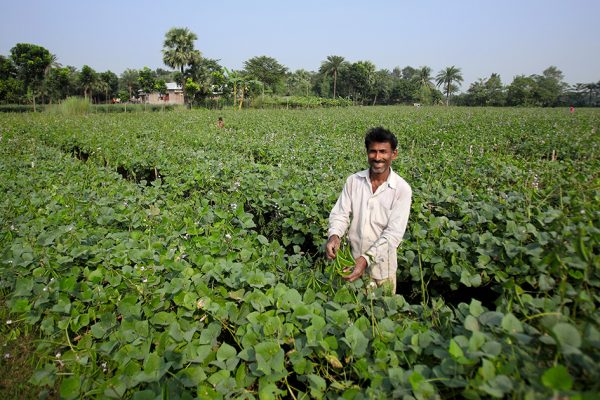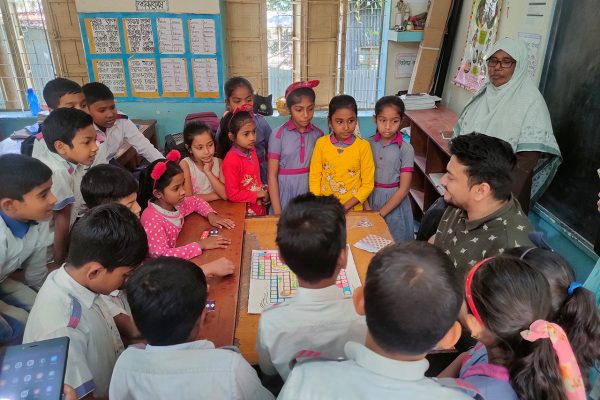Understanding the many faces of poverty
Reading Time: 3 minutes
For three days, I embarked on this journey with a dearth of knowledge on village etiquette, a language barrier (weak spoken Bengali), tainted with urban hues. Yet I was accepted into their homes with open arms and wide-eyed grins. And as we spoke to the families, our preconceived, textbook definitions of hardcore poverty came into question.
Bangladesh and poverty go a long way back. Statistically, we show progress by the significant decline in national poverty rates. But recent studies show that poverty reduction rate has reduced from 1.2 percentage points annually from 2010 to 2016 compared to 1.7 from 2005 to 2010. Approximately 20 million people still live in extreme poverty in Bangladesh.
To enlighten myself and understand the multidimensional aspects of poverty, I, along with 11 other students from various universities in Dhaka, travelled to four villages in Rangpur- a district where poverty levels have actually risen since 2010. We interviewed 3 families living in ultra-poverty, as part of a visit facilitated by BRAC and BRAC Institute of Governance and Development.
For three days, I embarked on this journey with a dearth of knowledge on village etiquette, a language barrier (weak spoken Bengali), tainted with urban hues. Yet I was accepted into their homes with open arms and wide-eyed grins. And as we spoke to the families, our preconceived, textbook definitions of hardcore poverty came into question.
Our first interview with an ultra-poor family (control household for a randomised control trial research) revealed that despite having access to electricity, a sanitary latrine, and a steady source of earning, the family of 4 are still severely susceptible to climate and health shocks. They barely manage to eat 3 times a day – meals largely consisting of rice and foraged leaves. Foreseeing no other means of living, the family resorted to sending their 7-year-old daughter to Dhaka to work as a housemaid.
The second household, a recently selected participant of the programme, had a consistent income source, by selling puffed rice, and a cow (provided by BRAC). Yet they still continued to sleep under a leaking roof with no access to a sanitary latrine.

The author on the left and BRAC UPG programme participant Monoara on the right.Photo Credit©BRAC
Fighting poverty as their everyday battle, these resilient individuals inspired us. We evidenced this full throttle while interviewing our third household, a 2015 graduate of the BRAC’s Ultra-Poor Graduation Programme.
She received a cow as an asset, and with the appropriate mentoring from BRAC, she was able to diversify her income. Within 3 years, she became the proud owner of poultry, livestock and a sewing machine, which judging from her expression, was her favorite amid the rest. She had better living standards which helped to reinforce her identity, self-confidence and strengthened her position as a decision-maker in her household. She exhibited incredible confidence in her daughter’s future as a working woman.
Our experience proved to us that the extent of poverty goes deeper than we had imagined. Unless we step out of our shoes and into theirs, we cannot truly comprehend ultra-poverty.
A take on local governance: Reality vs. Perception
We commonly depict local government officials as unreliable in performing their duties. What the majority believe may not be entirely wrong, but such depictions may be a misrepresentation of the entire truth.
We gained a different perspective when we met local government officials at Badarganj Union Parishad. We learnt of their sources of funding, safety net allocations and other initiatives they implement for communities.
We realised two things from the discussion: Firstly, critique should be backed with facts or primary data. Secondly, in spite of the corruption, and the existence of a flawed system, we found that sometimes, the officials are making an actual effort.
These efforts fail to catch our attention due to constraints, such as shortage of safety net allocations, funds, inadequate tax collections, etc. Misunderstandings among locals arise due to the process of arbitrary decision-making in the allocation of funds for various development programmes. Along with many other internal issues that we were not privy to, the job of a union parishad official is, nevertheless, a difficult one.
“Poverty is not just a lack of money; it is not having the capability to realize one’s full potential as a human being.”
We encounter poverty every day. We go past slums. We lend an ear to our helpers in distress. We talk to our rickshaw mamas.
Yet, its gravity fails to grasp our psyche, since we have never really experienced absolute constraints in living. Three days are not enough to comprehend the intensity of their suffering, but it was enough to start a conversation within myself.
This experience made me realise that, with consistent mentoring and asset transfers, these individuals can come to recognise their potential and slowly, but surely, lift themselves out of poverty. I saw extreme poverty compelling one mother to send her daughter off to work at an early age, while a small transfer of reproducible assets stimulated another to invest in developing her daughter’s human capital.
Poverty is multidimensional, and hence should be tackled with multidimensional skill-sets. But what are we, the labeled millennials and generation Z’s doing about this?
We need students from various disciplines, from engineering to anthropology to finance, to take initiatives and contribute effectively to tackle this issue. It seems tedious in theory, but during such times of global turmoil and uncertainty, we the youth, can no longer afford to be apathetic.
Marjan Hossain is a Graduate Research Assistant, East West University.





